Ho Chi Minh city (Saigon) 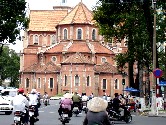
Ho Chi Minh-City, named Saigon before 1975, is also the metropolitan city of the South Vietnam, plays the role of the economic capital of the country. During the 6th decade of the last century, it was considered as the pearl of the Far East and the most important regional port, but also a scientific center.
Nowadays, Ho Chi Minh-City; is not only one shopping center but also scientific, technological, industrial and tourist. In spite of its 300 years history, Ho Chi Minh-City has many exemplary architectural works, marked by Chinese Vietnamese and European origins, among which: the Dragons House (Nha Rong), the temple of the Jade Emperor, China Town, Reunification palace, municipal theatre, Central post office, the old pagodas. From this city, Ho Chi Minh went to France in 1910 in the boat La Touche Tréville, on the purpose of saving his people.
Cu Chi Tunnels 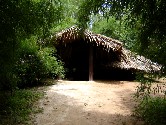
The Cu Chi tunnels played a great role in Vietnam war. Located at forty kilometers in the North-West of Ho Chi Minh City.They were dug from the end of the year 1940 by combatants, faced the French forces then American, the artilleries, the bombs and the chemical weapons. Called the " Iron Triangle " , then the “Zone of shooting at will” extending on more than 200 kilometers, approximately 1,20 m in height on 0,80 m in broad, including the kitchens, the infirmaries, the meeting rooms these tunnels allowed the zones controlled by the Vietcong to communicate between them, when they were insulated in American or South Vietnamese zones. They were also the shelters to the population at the time of the air raids. The vietcong soldiers lived there under extremely painful conditions, they are also the alive witnesses to the patriotism of the Vietnameses.
Cao Dai Temple 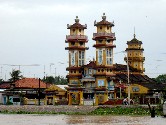
Builded in 1926, in the East of Tay Ninh town, this temple is the center of CaodaÁ¯sm. A synthesis of all the architectural schools of the Orient and Occident, but it is not extravagant, and its beauty is original. We have occasion to attend the ceremony at noon. We can find on the altar all the great men of the world: Cakyamauni, Confucius, Jesus - Christ, Laos - Tseu, even Janne d' Arc, Victor Hugo, Lénine etc . and the divine eye symbolizes this religion with the philosophy “all the religions direct towards the same way”.
The Mekong delta 
An immense extremely fertile plain, extends between Saigon, Cambodia and the China Sea, crossed by the nine arms of Mekong River (nine Dragons in Vietnamese). From Cambodia, this delta deposits alluvia and sediments and throws its muddy floods in turquoise water of the sea. Granary of the country, the Mekong delta gathers 9 provinces connected between them by roads, ways and channels.
-My Tho (72 km from Saigon), which means “good scented grass”, is the closest town of Ho Chi Minh and it’s the capital of Tiên-Giang province. Located on the northern bank of Mekong River, component one of the most luxuriant gardens of Vietnam (coconuts, banana trees, mango trees) on the islands.
- Vinh Long (136 km from Saigon) located at the center of all the delta, between two arms of Mekong. We can pass there while boating through the small channels and the orchards which lead to the floating market of Cai Be.
-Cân Tho, the heart of the Mekong delta. Living and sympathetic place, it is a good starting point to visit the Mekong delta where very beautiful floating markets Cai Rang, Phong Dien and Phung Hiep occupy most of Mekong, a boat trip enables us to discover the animated life of the inhabitants.
-Sadec,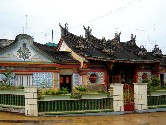 in the province of Dông Thap. Famous for its horticulture (here grow all kinds of exotic flowers). At the colonial time, here had been called “the garden of Cochinchine”. In this ignored village of the Mekong delta which Marguerite Duras lived until her adolescence. A small town of the delta where remain still some colonial houses and “Chinese house” (of his novel : Lover, also adapted to the cinema screen. in the province of Dông Thap. Famous for its horticulture (here grow all kinds of exotic flowers). At the colonial time, here had been called “the garden of Cochinchine”. In this ignored village of the Mekong delta which Marguerite Duras lived until her adolescence. A small town of the delta where remain still some colonial houses and “Chinese house” (of his novel : Lover, also adapted to the cinema screen.
This area was the country of Kh'mer people, during our visits, we meet several pagodas with the pointed roofs. Bat pagoda in Soc Trang is most beautiful.
Phu Quoc Island 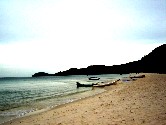
Phu Quoc island is the largest island of Vietnam with the area of 585 km2. Located in the Golf of Thailand, 45 km from Ha Tien and 15 km in the South of Cambodia coast. Belonging to Kien Giang province and an archipelago including 22 islands.
Called emerald island, Phu Quoc has several natural resources, known for its sauce (Nuoc Mam) which is made from a small fish, “Ca COM”, containing a great quantity of proteins. Phu Quoc annually produces six million litres of this famous sauce.
Several ports are located on the island, such as An Thoi and Hon Thom, where accost Vietnamese and foreign boats. We find there also several historic sites to visit, such as the military base of the national hero, Nguyen Trung Truc, the relics of Gia Long King and Phu Quoc prison. We finally count more than 105 islands on the broad of Phu Quoc. Some between them, such as Hon Tre and Kien Hai, located at 25 km from Rach Gia, are very inhabited. The visitors can stroll there on the beaches or make excursion, and observe the wild animals in their natural habitat.
|

